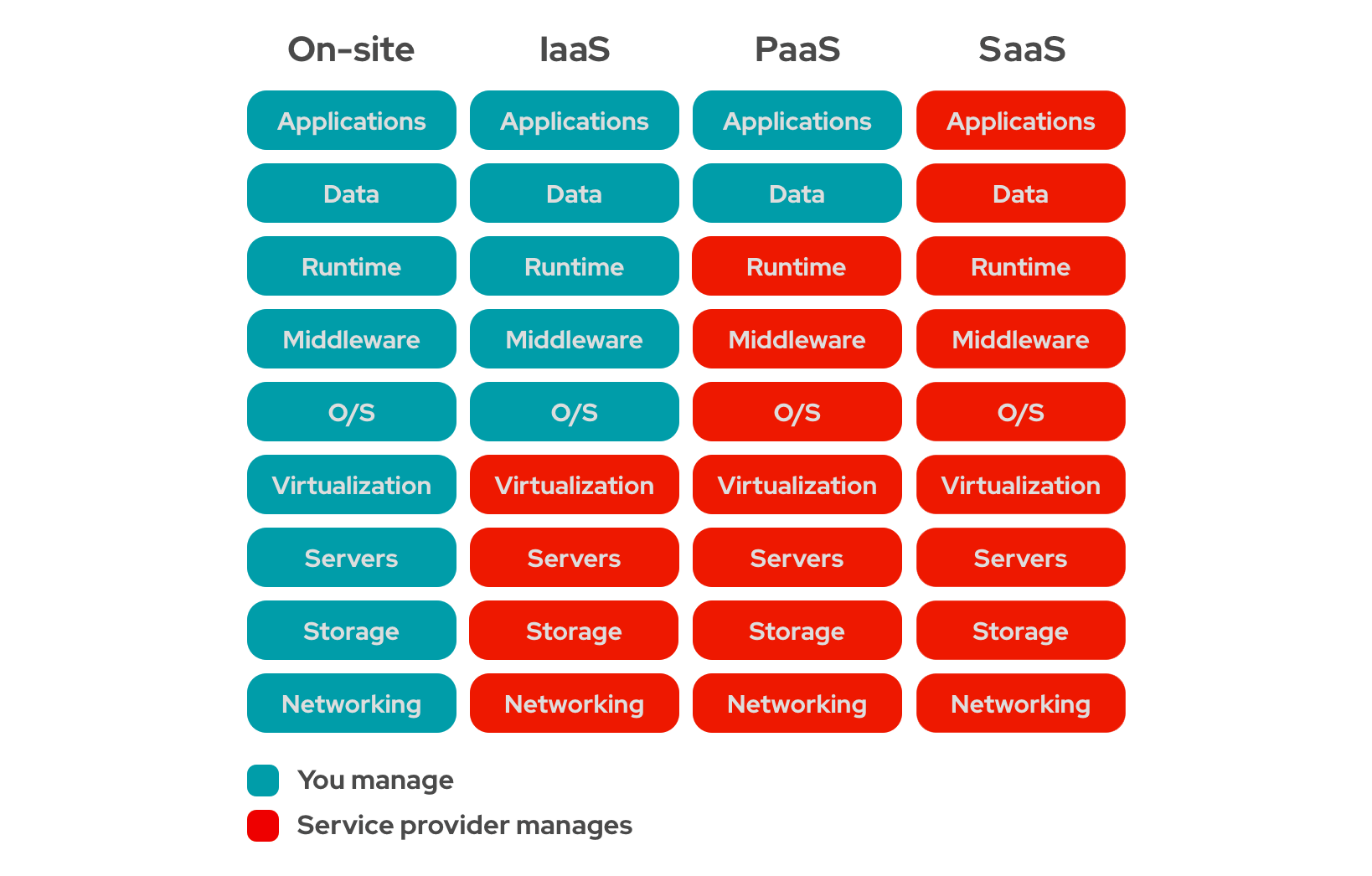At a high level, cloud-provided services can be categorized into the following – Infrastructure as a Service (IaaS), Platform as a Service (PaaS), and Software as a Service (SaaS). Before you design an application for the cloud, it is important to get a basic understanding of these types, to make a call on what application best fits into which kind of service.
Before the cloud, when we owned the infrastructure on which applications were deployed, we were responsible for buying and managing hardware (usually a Server or PC), then deploying Operating Systems, Firewalls, application servers, Databases, and other software for applications to run. Everything needed to be manually handled from the power supply to software patches. This was changed with the introduction of the cloud.
Infrastructure as a Service or IaaS is the basic set of services provided by cloud providers, where you are provided with bare minimum hardware needs. For example, you take a Virtual machine and install OS on that (mostly you will get a VM with pre-installed OS, but you are responsible for managing the patches and upgrades). On top of that, you are responsible for installing and managing any tools and software needed for your applications.
Platform as a Service or PaaS provides a platform on top of which you can deploy your applications. In this case, the only thing you are responsible for is the code or application and data. Amazon Elastic Beanstalk or Azure Web Apps are examples of such services, that help you directly deploy your applications without worrying about underlying hardware or software.
Software as a Service or SaaS, as the name suggests, are services where you get the whole functionality as off the shelf, all you need to do is login and use the software. Any email provider service is a good example, like Gmail. you just need to login and use the service.

